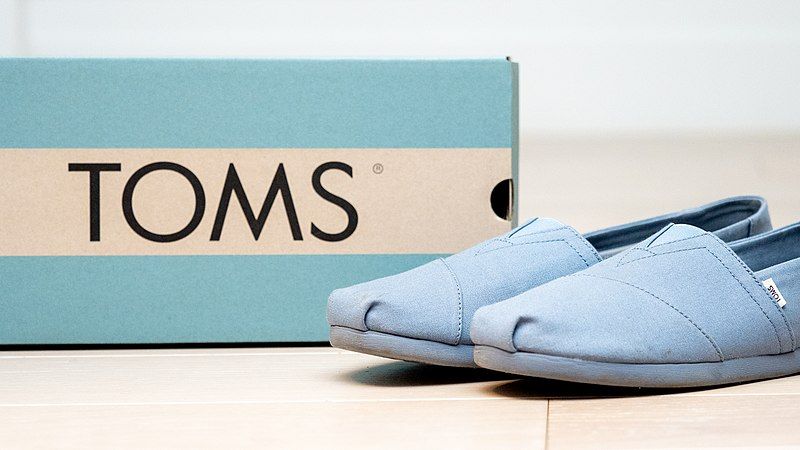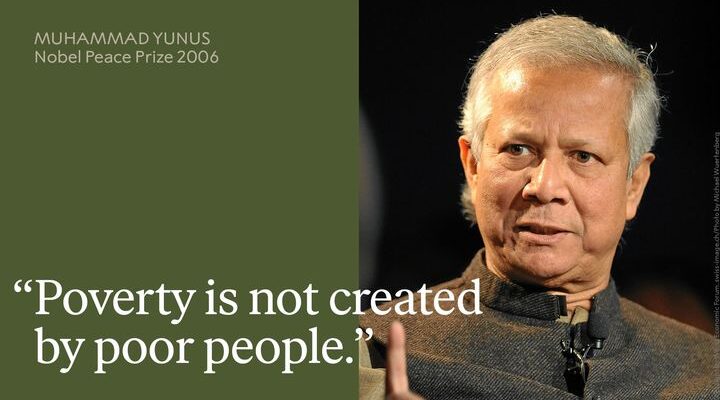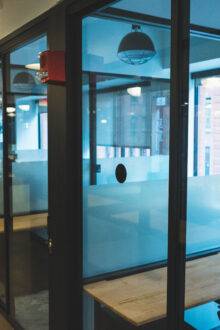Social business is a concept pioneered by Nobel laureate Professor Dr. Muhammad Yunus, who is also known as the father of microfinance and social entrepreneurship. Social business is a type of business that is driven by a social mission, rather than profit. Unlike traditional businesses, social businesses do not distribute any dividends to their owners or investors. Instead, they reinvest all their profits back into the business or the social cause they are serving. The aim of social business is to create positive social impact, such as alleviating poverty, improving health, protecting the environment, or empowering marginalized communities.
Social business is different from charity because it does not depend on donations or grants to sustain itself. Rather, it operates on market principles and generates its own income by selling products or services that meet the needs of the people it serves. Social business is also different from corporate social responsibility (CSR), because it does not use social impact as a side activity or a marketing tool. Rather, it makes social impact the core purpose and the main measure of success of the business.

Social business helps the world by addressing some of the most pressing problems that affect millions of people, especially in developing countries. By applying business skills and innovation to social causes, social business creates sustainable and scalable solutions that can improve the lives and livelihoods of the marginal and the disadvantaged. Social business also empowers people to become agents of change, rather than passive recipients of aid. By creating opportunities for income, employment, education, and participation, social business enables people to overcome their challenges and realize their potential.
There are many examples of social business around the world, in various sectors and industries. Here are some of the most inspiring and successful ones:
Grameen Bank: Grameen Bank is the first and the largest microfinance institution in the world, founded by Professor Yunus in Bangladesh in 1976. Grameen Bank provides small loans, without any collateral, to poor people, especially women, who want to start or expand their own businesses. Grameen Bank also offers other financial services, such as savings, insurance, and pensions, as well as social services, such as education, health, and housing. Grameen Bank has more than 9 million borrowers, 97% of whom are women, and has a repayment rate of over 99%. Grameen Bank has helped millions of people escape poverty and improve their living standards. Grameen Bank and Professor Yunus jointly received the Nobel Peace Prize in 2006 for their contribution to economic and social development.

TOMS: TOMS is an American social business that sells shoes, eyewear, apparel, and accessories, and uses a one-for-one model to give back to society. For every product sold, TOMS donates a pair of shoes, a pair of glasses, a sight-saving surgery, a safe birth, or a week of clean water to a person in need. TOMS works with over 100 giving partners in more than 50 countries to deliver its impact. TOMS has given over 100 million pairs of shoes, restored sight to over 780,000 people, provided over 720,000 weeks of safe water, and supported over 175,000 safe births. TOMS also supports social entrepreneurs and innovators through its social innovation fund and its annual impact summit.
A mathematical example of a social business model is the following:
Suppose there is a social business that produces and sells low-cost sanitary pads to poor women in rural areas, who otherwise lack access to hygienic menstrual products. The social business has a social mission to improve the health and dignity of these women, as well as to empower them economically by providing them with employment opportunities.
(Al Shahriat Karim, Business legal Advisor and Social Business Practitionar)
The social business has the following parameters:
- The fixed cost of setting up the production facility is $10,000.
- The variable cost of producing one pack of sanitary pads is $0.5.
- The selling price of one pack of sanitary pads is $1.
- The demand function for the sanitary pads is given by $q = 5000 – 4000p$, where $q$ is the quantity demanded and $p$ is the price. [$q$ is the quantity demanded of the sanitary pads, in packs]
- The social business does not distribute any dividends to its owners or investors but reinvests all its profits back into the business or the social cause.
[The equation $q = 5000 - 4000p$ shows the inverse relationship between the quantity demanded and the price: as the price increases, the quantity demanded decreases, and vice versa. This is based on the law of demand, which states that consumers tend to buy more of a good or service when its price is lower, and less when its price is higher, ceteris paribus]
The mathematical model for the social business is:
- The revenue function is given by $R(q) = pq = q(1 – \frac{q}{4000})$, where $R(q)$ is the revenue and $q$ is the quantity sold. [$R(q) is the revenue function of the social business that sells sanitary pads]
- The cost function is given by $C(q) = 10000 + 0.5q$, where $C(q)$ is the cost and $q$ is the quantity produced.
- The profit function is given by $\pi(q) = R(q) – C(q) = q(1 – \frac{q}{4000}) – (10000 + 0.5q)$, where $\pi(q)$ is the profit and $q$ is the quantity sold.
- The break-even point is the quantity that makes the profit zero, i.e., $\pi(q) = 0$. Solving for $q$, we get $q = 2000$ or $q = 0$. The latter is trivial, so the break-even point is $q = 2000$.
- The optimal quantity is the quantity that maximizes the profit, i.e., $\pi'(q) = 0$. Solving for $q$, we get $q = 1333.33$ or $q = 2666.67$. The latter is a local minimum, so the optimal quantity is $q = 1333.33$.
- The optimal price is the price that corresponds to the optimal quantity, i.e., $p = 1 – \frac{q}{4000}$. Substituting $q = 1333.33$, we get $p = 0.66667$.
- The optimal profit is the profit that corresponds to the optimal quantity, i.e., $\pi(q) = q(1 – \frac{q}{4000}) – (10000 + 0.5q)$. Substituting $q = 1333.33$, we get $\pi(q) = 3333.33$.k
[$R(q)$ shows how much money the social business makes by selling $q$ packs of sanitary pads at a price of $p$ per pack. The equation $R(q) = pq = q(1 - \frac{q}{4000})$ is derived from the demand function $q = 5000 - 4000p$, which shows how many packs of sanitary pads the customers are willing to buy at a given price. By substituting $p = 1 - \frac{q}{4000}$ into $R(q) = pq$, we get $R(q) = q(1 - \frac{q}{4000})$. This equation shows that the revenue depends on the quantity sold, and it has a maximum value when $q = 1333.33$]
The interpretation of the mathematical model is:
- The social business needs to sell at least 2000 packs of sanitary pads to cover its costs and break even.
- The social business can maximize its profit by selling 1333.33 packs of sanitary pads at a price of $0.66667 per pack, and earn a profit of $3333.33.
- The social business can use its profit to expand its production, lower its price, increase its quality, or invest in other social causes, such as education, health, or awareness campaigns for the women it serves.
This mathematical model is showing how a social business can operate sustainably and effectively to provide low-cost and high-quality sanitary pads to poor women in rural areas. By using the mathematical model, the social business can determine the optimal price and quantity that can maximize its profit and social impact. The social business can also use the profit to reinvest in the business or the social cause, such as expanding its production, lowering its price, increasing its quality, or investing in other social services, such as education, health, or awareness campaigns for the women it serves. By doing so, the social business can help improve the health and dignity of the women, as well as empower them economically and socially.


I really like what you guys are usually up too. This sort of clever work and coverage! Keep up the superb works guys I’ve added you guys to my personal blogroll.
I’d like to thank you for the efforts you have put in penning
this website. I’m hoping to check out the same high-grade blog
posts from you in the future as well. In fact, your creative writing
abilities has encouraged me to get my own website now 😉
Hey There. I discovered your weblog the usage of msn. This is a really neatly written article.
I’ll make sure to bookmark it and come back to read extra of
your helpful information. Thanks for the post.
I’ll definitely return.
Hi there colleagues, its enormous piece of writing on the topic of
educationand entirely explained, keep it up all the time.
Excellent website. Lots of helpful information here.
I’m sending it to a few buddies ans also sharing
in delicious. And naturally, thank you on your effort!
Pretty! This has been an incredibly wonderful article. Thanks
for providing this info.
Outstanding story there. Good luck!
Hey just wanted to give you a quick heads up.
The text in your content seem to be running off the screen in Chrome.
I’m not sure if this is a formatting issue or something to do
with browser compatibility but I thought I’d post to let you know.
The design and style look great though! Hope you get the problem resolved soon. Thanks
Hello, I do believe your site might be having web browser compatibility problems.
When I take a look at your blog in Safari, it looks fine
however when opening in Internet Explorer, it has some overlapping issues.
I just wanted to provide you with a quick heads up! Besides that, great site!
I am sure this article has touched all the internet viewers, its really really good paragraph on building up new blog.
Asking questions are really good thing if you are not understanding anything entirely, but this post gives fastidious understanding yet.
Keep on working, great job!
Very good info. Lucky me I came across your blog by accident (stumbleupon).
I’ve book marked it for later!
Great delivery. Sound arguments. Keep up the great effort.
Great article, totally what I was looking for.